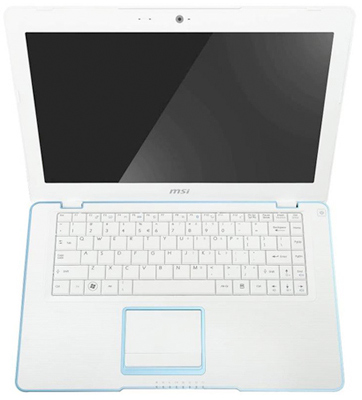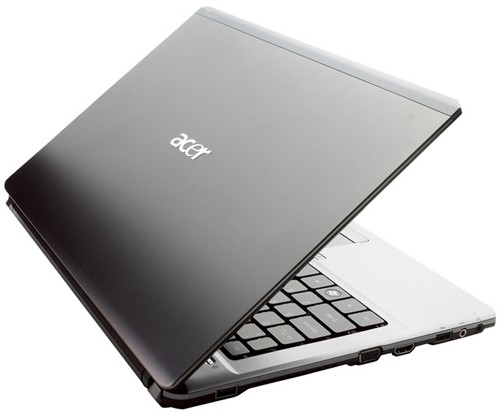2009 Netbook and Notebook Buyer's Guide
Thin-And-Light Notebooks
If you just can't learn to adapt to the netbook's less-than-full-size keyboard, or you're simply looking for a bit more screen real estate as well as an optical drive, maybe a thin-and-light notebook is the machine for you. These rigs, some of which are often referred to as ultraportables, typically boast low-power chips that are more potent than the Atom series found in most notebooks. A dead giveaway is the inclusion of the Intel CULV (Consumer Ultra Low Voltage) platform, which provides plenty of power for everyday tasks without draining your battery in a flash.
In a nutshell, a thin-and-light machine is basically an oversized netbook with more horsepower. With that usually comes a 13.3" to 14" display, an optical drive of some sort, 2GB+ of RAM, 160GB+ hard drives or an optional solid state drive, multiple video outputs (DVI, VGA, HDMI, etc.), more powerful integrated GPUs (and the occasional optional discrete GPU), a frame that doesn't weigh much more than a netbook (around 3-4 pounds, on average) and a keyboard that's full size or extremely close to full size. A good example of this is Dell's Studio XPS 13 on the high end and Lenovo's IdeaPad Y530 on the low end.
Given that these machines break the hardware barrier set on netbooks, you'll often find Windows Vista loaded, which currently puts quite the strain on these machines. Thankfully, Windows 7 is just around the corner (October 22nd, if you've forgotten), which should run a lot smoother on these ultraportables. Aside from getting Vista, you'll also get a bigger dent in your wallet if you snag one of these instead of a netbook. Typically, thin-and-light notebooks run anywhere from $800 to $2000+, depending on the brand and configuration. Still, these machines have far greater potential when it comes to multimedia, yet most will last as long if not longer than the average netbook.
In fact, many thin-and-light machines can be ordered with a Blu-ray drive, and 720p movie playback is usually not a problem. Without a doubt, ultraportables are far more capable than netbooks, but they're also at least 2x to 5x more expensive.
In a nutshell, a thin-and-light machine is basically an oversized netbook with more horsepower. With that usually comes a 13.3" to 14" display, an optical drive of some sort, 2GB+ of RAM, 160GB+ hard drives or an optional solid state drive, multiple video outputs (DVI, VGA, HDMI, etc.), more powerful integrated GPUs (and the occasional optional discrete GPU), a frame that doesn't weigh much more than a netbook (around 3-4 pounds, on average) and a keyboard that's full size or extremely close to full size. A good example of this is Dell's Studio XPS 13 on the high end and Lenovo's IdeaPad Y530 on the low end.
Given that these machines break the hardware barrier set on netbooks, you'll often find Windows Vista loaded, which currently puts quite the strain on these machines. Thankfully, Windows 7 is just around the corner (October 22nd, if you've forgotten), which should run a lot smoother on these ultraportables. Aside from getting Vista, you'll also get a bigger dent in your wallet if you snag one of these instead of a netbook. Typically, thin-and-light notebooks run anywhere from $800 to $2000+, depending on the brand and configuration. Still, these machines have far greater potential when it comes to multimedia, yet most will last as long if not longer than the average netbook.
In fact, many thin-and-light machines can be ordered with a Blu-ray drive, and 720p movie playback is usually not a problem. Without a doubt, ultraportables are far more capable than netbooks, but they're also at least 2x to 5x more expensive.
Here are a few specific things we'd look for on a Thin-and-Light Notebook:
Here are a few specific things we'd prefer to avoid on a Thin-and-Light Notebook:
- Intel CULV platform (low power, good performance)
- At least three USB 2.0 ports (no need to settle for less given the stiff competition)
- At least four hours of "real-world" battery life (a highly portable machine should last you quite awhile; why else would you pay for portability?)
- An optical drive, Blu-ray if you own those movies (this is a major step-up from a netbook; without a need for an optical drive, you should consider paying less for a netbook)
- Multi-touch trackpad (again, these can make you far more productive than traditional pads)
- GPU capable of high-def video playback (such as NVIDIA's GeForce 9400M, which is often bundled in the "Ion" platform)
- An Intel Atom CPU, or anything slower than CULV (you're paying extra here, you shouldn't get stuck with netbook-level processors)
- No multi-card reader (an on-the-go computer user will eventually need to read a flash card sans a dedicated reader--count on it!)
- Price tag of over $1500 without extra options (there are far too many baseline options in this space for under $1500 to overspend for brand name or other non-valuable factors)
- Sub-13" display (there are numerous 11.6" and 12" netbooks out there; if you pay extra for a thin-and-light, at least get a high-res 13" - 14" display)
- Cramped keyboard and trackpad (one of the reasons for upgrading to this level over a netbook is to sidestep the cramped keyboard; make sure you get a full-size or near-full-size keyboard to make typing pleasurable instead of a chore)








